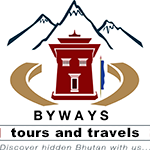- Where is Bhutan?
Bhutan is a small land-locked nation located at the end eastern Himalayan region which has boarder to the north by Chaina and towards east, west and south by India. Its landscape ranges from subtropical forest in the south to subalpine forest and snowy mountains in the North.
2. How do I get to Bhutan?
There are numbers of airport from where you can fly into Bhutan, You can directly fly from Nepal (Katmandu), India (New Delhi, Kolkata, Mumbai,Bagdora and Gaya), Singapore (Changi), Thailand (Bangkok) and Bangladesh (Dhaka). Or you can also travel through overland through Indian boarder to Bhutan via Phuentsholing, SamdrupJogkhar and Gyelephu. All your travel arrangement to Bhutan will be arranged by our office.
3. Do i need to use a tour operator to book my travel?
You cannot enter the country and travel around the country on your own, we have a government regulation that you must use a local licensed Bhutanese tour operator to book your travel to Bhutan or one of our international partners.
4. Do I need a visa to enter Bhutan?
All the international tourist other than the citizens of India, Bangladesh and Maldives, wishing to visit Bhutan must require a visa prior the travel to Bhutan, which must be pre-arranged through a local Bhutanese tour operator like Isolated Bhutan Travels or any of our international partners once you confirm your travel date and transfer the 100% tour payment. Visa are processed through an online system by our office for you upon arrival of 100% tour payment.
5. How much does the visa cost?
Actually visa cost only USD 40 per person and this need to be send to us along with the total tour payment in advance because we are allowed to applied for your visa only upon arrival of 100% tour payment along with your visa fee, this is the system we have in Bhutan which is regulated by Tourism Council of Bhutan.
6. What is the daily tariff i need to pay and what are included on it?
We have two season for tourist Peak season and Off season, Peak season are March, April, May, September, October and November where daily tariff you need to pay is USD 265 Per night per person for single traveller, USD 255 per night per person for two people in a group and USD 225 per night per person for people travelling more than 3 person in a group. This tariff has been fixed by the government.
Similarly Off season are December, January, February, June, July and August where daily tariff you need to pay is USD 220 Per night per person for single traveller, USD 210 per night per person for two people in a group and USD 180 per night per person for people travelling more than 3 person in a group.
Includes:
- Accommodation in 3* Hotels in twin sharing : basis.
- All Three Meals (Break Fast, Lunch and Dinner)
- Daily Tariff
- Royalty and Government Taxes
- Sustainable Development Fee of USD 65 per night per person which goes towards free education, Free Healthcare and infrastructure development.
- Transportation from receive till drop.
- Museum and Monument fee.
- Bottle Water in Car.
- English Speaking Guide
- Sightseeing.
- Driver.
Excludes:
- Air Fare
- Visa Fee
- Insurance Premiums.
- Payment for service provided on a personal basis.
- Cost for any services not mentioned in the “Inclusive Head”
- Cost incurred due to mishaps, strikes, political unrest, etc.
- Personal expenses in items such as laundry, soft or hard drinks, camera charges, bottle water in restaurant or in hotels, Portage, bellboy charges.
- Tips to guide and driver.
7. What is the currency used in Bhutan?
Bhutanese currency is known as the Ngultrum. Its value is equivalent to an Indian currency (Rupee) which is widely accepted in the country. US $ 1 is about Nu. 60. Foreign currency can be changed at the airport and local banks. Tourist can also withdraw in local currency through ATMs using international cards like MasterCard, Maestro Card or Visa.
8. What are the currency accepted in Bhutan?
9. Is there a limit on the number of tourists that can enter Bhutan each year?
There is no limit on the number of tourists allowed to visit in a year. In order to protect our culture, traditions and natural environment, the government has adopted a unique policy of “High Value, Low Impact ”. This policy is aimed at attracting tourists who respect the unique culture and values of the Bhutanese people.
10. What’s the food like in Bhutan?
The most distinctive characteristic of Bhutanese cuisine is its spiciness. Chillies are an essential part of nearly every dish and are considered so important that most Bhutanese people would not enjoy a meal that is not spicy.
Rice forms staple Bhutanese diet. It is accompanied by one or two side dishes consisting of meat or vegetables. Pork, beef and chicken are consumed most often. A wide selection of western and Indian food is also available in many of the restaurants around the country.
11. What is the procedure to travel to Bhutan?
Everyone traveling to Bhutan requires to obtain a visa in advance, except for passport holders from India, Bangladesh and the Maldives. Passport holders from these three countries can obtain a free Entry Permit on arrival, upon producing their passport with a minimum six months validity.
